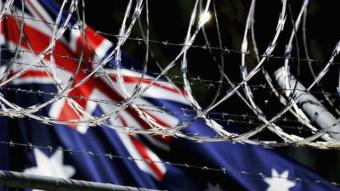
Government aims to further toughen approval process.
When the government this week announced the federal budget for 2013/14, one set of numbers was always going to grab the headlines. Treasury has forecast an increase in spending on detaining and processing asylum seekers to the tune of $3.2 billion over the next four years. This brings the total cost to over $8 billion over the next four years.
Not surprisingly, this has drawn criticism from many quarters. It is obvious that most Australians would rather see this money spent on health, education or infrastructure. For the sake of comparison, the Gonski education reforms come in at $9 billion over the next 6 years.
One budget week announcement that wasn’t as highly publicised was the government’s commitment to undertake a ‘comprehensive review’ into the process of granting protection visas, the aim of which would be to ensure “acceptance outcomes” for asylum seeker claims are “consistent with other countries”.
Currently more than 9 of every 10 asylum seekers who arrive by boat in Australia are found to be genuine refugees and are granted protection.
Using the latest DIAC figures for arrivals last year, 94.7% of asylum seekers were eventually granted protection after a rigorous and comprehensive process, including all available reviews and appeals.
These stages are:
-Interview with DIAC case officer, where the initial claim for asylum is made. All documentation is presented and a comprehensive examination of the basis of the claim for protection is made.
-Review by Refugee Review Tribunal can be sought if the claim is unsuccessful in the first stage. The RRT will make a merits based review of the case.
-If protection has still not been granted by either of these two processes, the applicant can then chose to have the RRT decision examined for any ‘error of law’ that may have occurred. If such an error is found, the case will be referred back to the RRT.
-If there is again a negative finding, the applicant can apply directly to the Minister for Immigration to consider the case personally.
(For a comprehensive explanation of the rigorous process already in place to determine refugee status, see asylumexplained.asrc.org.au)
The above process is designed to not only weed out people who are not eligible for protection but more importantly to correctly identify those who are genuine victims of persecution and to whom we owe protection.
The government has decided that it wants to interpret and promote this 94.7% grant rate as a sign that the process is flawed and there are ‘non-deserving’ asylum seekers being granted protection. It gives these people the tag ‘economic migrant’.
Also worthy of consideration is that the long and perilous journey to Australia is in its self is the best filter for selecting the most desperate and worthy asylum seekers. The final protection visa grant rate is a reflection of the fact that only the most desperate are willing to take the huge risk of boarding a boat to Australia.
The final grant rate does not include these people who are ‘screened out’ despite potentially having an unexamined and possibly valid claim for protection. In fact, once the ‘advanced screening’ policy was introduced, the primary protection grant rates to IMA’s from Sri Lanka dropped from 100% in the Dec quarter of 2011 to just 8% in the Dec quarter of 2012. This was achieved through policy change only, not through any amendment to the Migration Act.
This is the core of the issue; it is government policy, not people fleeing persecution that is gouging money out of the budget. The set of policies enacted by Labor over the last 2 years amount to the most expensive possible program to manage the flow of asylum seekers. The mandatory 5 year stay in an offshore detention facility is estimated to cost up to $1.2 million per person. Chartering aircraft to fly to and from Christmas Island, Manus Island, Nauru and the Australian mainland is a huge expense. On one day alone in October 2012 the government spent $572,000 on flights between Brisbane and Nauru. Serco holds contracts worth $1.86 billion/year to manage offshore facilities. Clearly the expensive part of granting a refugee a protection visa is transporting them around the pacific and holding them in detention for extended periods of time. Processing asylum seekers in the community would cost a fraction as much as the current arrangement and this is money that could be saved with the stroke of a pen, as only a policy shift is required.
By aiming to have comparable acceptance rates to other countries, countries not surrounded by vast and forbidding oceans, the government is shooting an arrow and then painting the target around it. It is deciding how many asylum seekers it would like to have legitimate claims for protection, which is not only clearly flawed in a logical sense but breaches our obligations under the Refugee Convention.
Leave a reply


Connect with us
Need help from the ASRC? Call 03 9326 6066 or visit us: Mon-Tue-Thur-Fri 10am -4pm. Closed on Wednesdays.